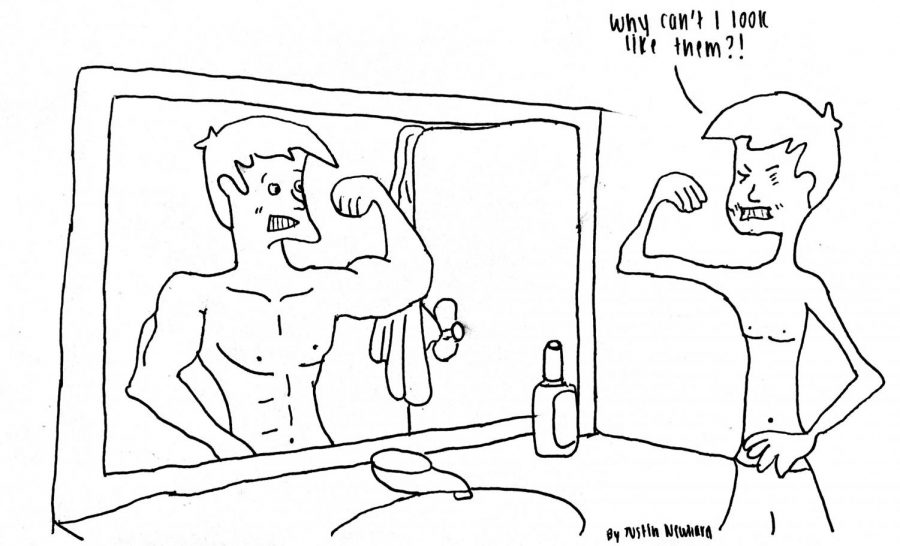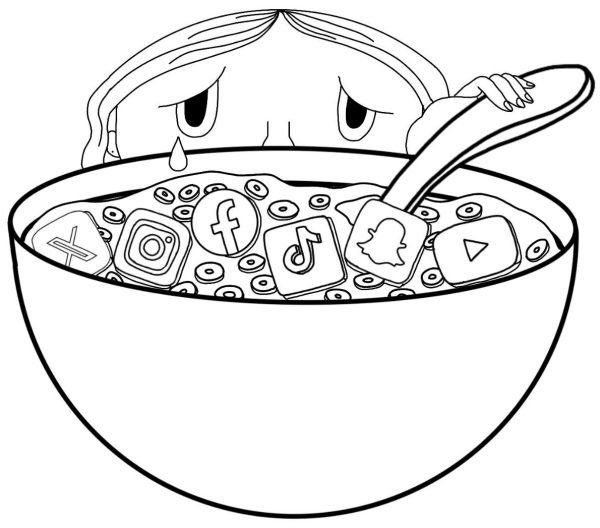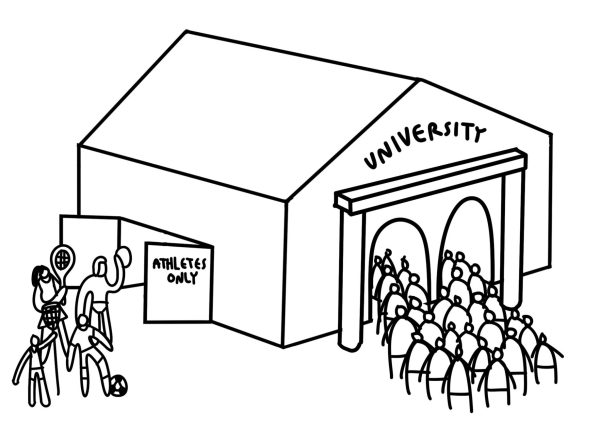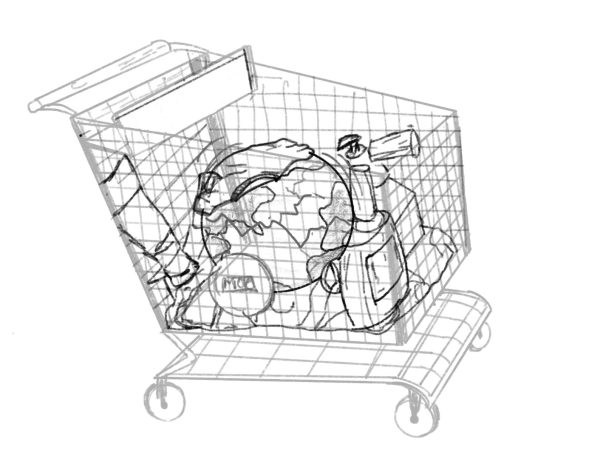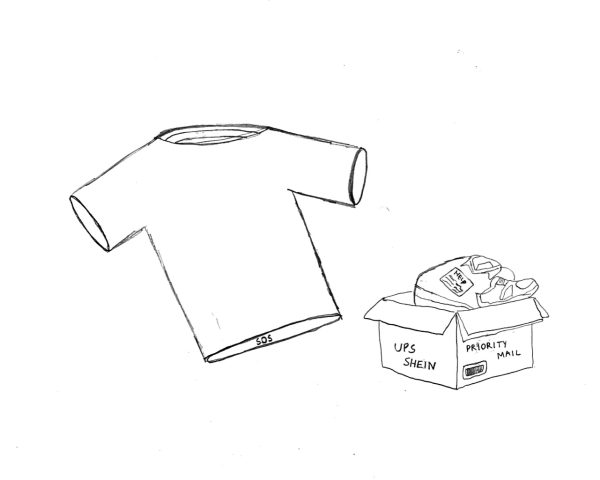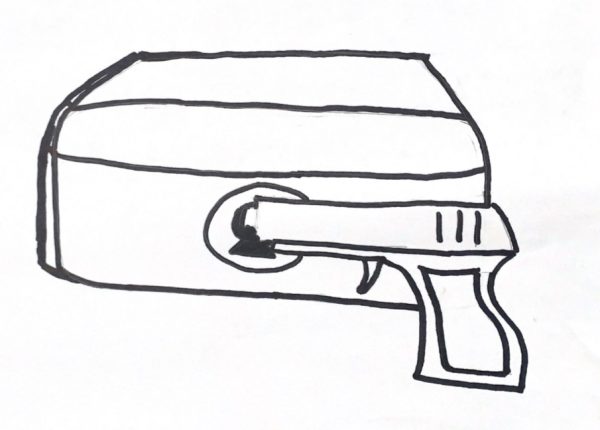The malice behind the macho-man mindset
December 16, 2018
In today’s society, perfection is no longer enough. Many high schoolers frequently feel the need to conform to their own idea of what being perfect means. In my progression through high school, I have seen significant efforts and campaigns focused on empowering women to feel confident in themselves,—rightfully so. However, while it is an empowering and impactful movement, emphasizing equality and self-love with the potential to reshape our society should not be restricted to one gender. So far, no similar trend has emerged which takes up the flag of redefining masculinity. And yet it needs, desperately, to be redefined.
The concept of masculinity has been sharply and historically characterized by stereotypes and superficial assumptions. This singular, narrowed vision of masculinity alienates a significant portion of males, making a brutish bodybuilder the default “accepted” appearance. The result of this exclusive delineation is not only an array of personal struggles, but an elitist society uncomfortable with male emotion.
Such a rigid definition of masculinity is not only mentally stifling but physically harmful, as seen in the prevalence of damaging body image issues. Due to the differing physicalities of men and women, they often have different body areas that they want to change. Whereas the most common struggle for women lies in their weight (and losing it), men predominantly tend to focus on their muscle mass, for the sake of being as strong as possible. According to the American Addiction Center, men with Body Dysmorphic Disorder (BDD), an illness that causes people to obsessively focus on a perceived flaw in their appearance, often fixate on their muscles, forcing themselves to go to the gym to build and maintain muscle mass, even if they intensely dislike the experience to the point of anxiety.
Extra repetitions on the dumbbells may seem innocuous; however, this practice is a common pattern among men with BDD: working out excessively to the point of exhaustion, or dieting unnecessarily. Going to the gym and overexerting to achieve a certain physical appearance has been proven to be detrimental to mental health, and can even lead to severe injuries.
This focus is known as muscle dysmorphia, a variant of BDD that is characterized by a perceived lack of muscularity and primarily affects males. According to the 2014 National Survey of Young Adults, it has been estimated that BDD affects 2.2 percent of male U.S. adults.
Pushed towards sports beginning in boyhood, men also face an expectation of athleticism. A traditional emphasis on sports is exhibited in sleek magazine ads of buff athletes, a form of mistargeted advertising that promotes an unhealthy and unrealistic body image. Nike, the champion of powerful athletic advertisements, illustrates this most clearly, exclusively using stockier, fitter men with athletic bodies.
Similar complaints of a narrow presentation of beauty are made of the female modeling industry. While there has been some effort to improve the female modeling industry in a manner which more accurately reflects the individuality of shape and body size, the men’s arena has yet to see such adaptation to realistic body images. A survey by Florida State University found that women who view images of other women with similar or larger body types as their own report higher body satisfaction and fewer social comparisons, suggesting that a similar shift in male advertising would engender more confident men.
I have never felt the need to be a big, macho, testosterone-filled, muscular male, but I have witnessed many of my friends try to be what society considers a “perfect” guy. As I have observed some of my friends struggling to conform to societal norms, like trying to become stronger or more dominant, I have also realized just how infrequently I have heard men talk about this topic. Men, like women, often struggle to discuss the demoralizing stigmas they are held to. Such discussion is further prohibited by a vague prejudice that such a discussion is “girly,” the result of a society which expects an entire gender to restrain emotion.
As teenage boys morph into men, there is a lot of changes, physically and mentally, leaving many guys in a vulnerable, insecure state. In a recent Bark survey, 49 percent of students self-reported that they believe men are not able to express their emotions freely compared to women. This shows that even here in progressive Marin, men still feel the pressure to not expose their emotions compared to women. Growing up as a boy, I have felt a burden to not present myself as weak.
Not only is men feeling unable to show their emotions reprehensible, but it can also prove to be critical. According to the American Foundation for Suicide Prevention, men die by suicide 3.53 times more often than women, accounting for seven of every 10 suicides per year. According to the World Health Organization, the suicide rate was 10 times higher in men of lower socioeconomic status than in affluent men, because the stress of providing for your family can become too much. This is because in society men are expected to be the primary breadwinner. Although it is changing, as many more women enter the workforce, many men still feel the pressure to bring in some kind of income to provide for their families, and for many, the feeling of letting their family down can be a major stressor.
Society needs to allow men and women the same privileges and allow everyone to be who they want to be; there should be no mold for how men and women should act and look. Our era is coming to be characterized by extensions of identity and acceptance of new identities. However, as we move to embrace a more diverse society, the entrapments of an inherently biased culture cannot be left behind and instead must be addressed. The identity of males must be reexamined and redefined to allow for individualized, natural expression of masculinity, ones not predetermined by the cover of Sports Illustrated.

